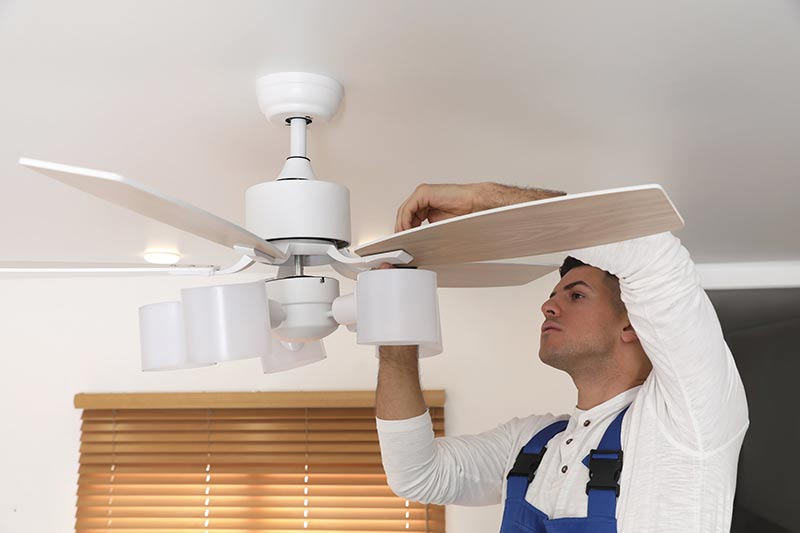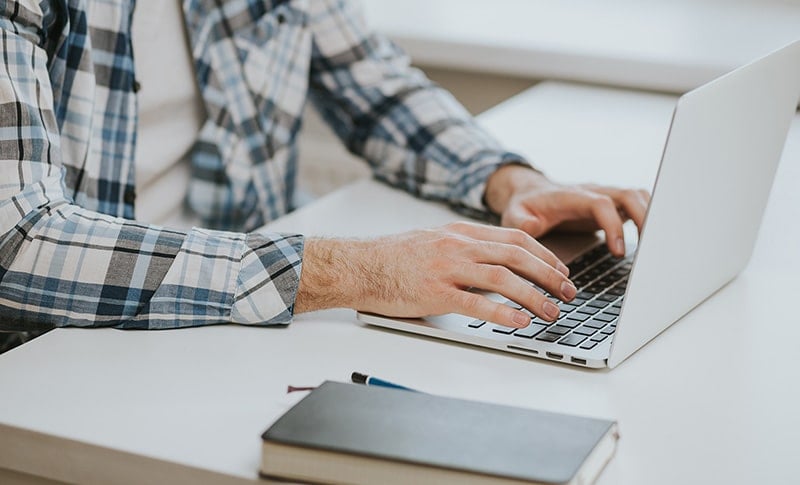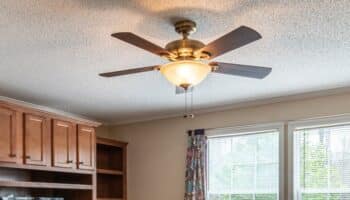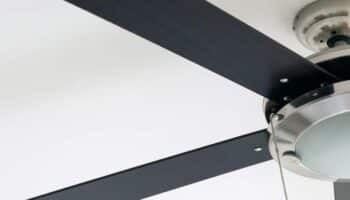Is your ceiling fan tripping your breaker?
That sucks! Being unable to use your ceiling fan because it’s experiencing issues can be super annoying, especially during summer.
Luckily, you’ve come to the right place.
If your ceiling fan is tripping your breaker, the circuit is probably overloaded, you have imbalanced blades, or the capacitor is faulty. A short-circuiting or overheating issue could also explain the problem.
Read on to keep your ceiling fan from tripping your breaker!
Ceiling Fan Tripping the Breaker? 5 Reasons Why (With Fixes)
In this section, I’ll guide you through the different reasons that can explain why your ceiling fan trips your breaker and provide various solutions so you can forget all about the issue today.
Are you ready? Let’s dive in!
#1 Circuit Overload
I tend to find that a ceiling fan trips breakers due to a circuit overload.
You see, electrically speaking, ceiling fans are like any other home appliance. To properly function, they must be connected to a power outlet. However, as opposed to your toaster or your blender, you won’t see the connection, but it’s definitely there.
If your ceiling fan keeps tripping your breaker, the circuit you’re connecting it to probably can’t supply the voltage your appliance needs, resulting in an overload and other serious problems.

Having too many appliances on the same circuit as your ceiling fan can also cause the breaker to trip, especially high-draw items, such as space heaters, hairdryers, electric ovens, etc.
Solution: You should first try redistributing the electrical load. Move some high-draw appliances to another circuit or avoid using them simultaneously. For example, avoid using a hairdryer that’s on the same circuit at the same time as the ceiling fan.
You know I’m all up for helping you do your own repairs, but if the issue persists and you’re not experienced with electrical outlets and home wiring, it’s best to call an electrician.
Most likely, they will disconnect the ceiling fan from the circuit it’s currently drawing power from and look for another one that can meet the appliance’s requirements.
#2 Imbalanced Fan Blades
If your ceiling fan keeps tripping the breaker, the blades are probably unbalanced.
To adequately spin around its own axis, your ceiling fan needs its blades to be perfectly balanced. Even the slightest degree of imbalance could cause the entire unit to become wobbly and spin erratically, often resulting in loose wires and overheating.

Solution: Take a closer look at how your ceiling fan is spinning.
If you detect even the slightest sign of imbalance, you can either tighten the screws at the base, trim your blades so they’re all the same length (in case they’re not), or even add special blade weights.
#3 Short-Circuiting
A short circuit can also explain why your ceiling fan keeps tripping breakers.
While ceiling fans are not as hard to install as other appliances, they definitely require some electrical savvy. To properly operate and process your inputs, your unit relies on several cables connected to your home’s layout.
As time goes by, or due to erratic spinning, some wires can come loose and touch each other, causing a short circuit and tripping your breaker.
A ceiling fan short circuit will not cause significant damage, but leaving the issue unattended for too long could eventually kill the unit. Please stop using your machine as soon as you suspect short-circuiting to be the problem.
Solution: If your ceiling fan is shorting out, follow these steps:
- Carefully turn off your breakers to interrupt all electrical current to the ceiling fan.
- Remove the light bulbs and their housings.
- Undo the screws in the motor holding the outer metal panel.
- Undo the remaining screws holding the motor to the ceiling, and carefully place it somewhere safe.
- Search the wiring in the hole where the motor goes, and look for anything suspicious.
If you spot a cable that’s either loose, frayed, or broken, you’ll have to find where it goes and reattach or repair it. Having your model’s electrical diagram handy can help you a lot.
However, I want to reiterate that there’s no shame in asking for help. It’s better to stay safe and call someone certified in these kinds of repairs.
Remember that you’re tampering with electricity, and although you flipped the breakers off, there are always reasons to be careful.
#4 A Faulty Capacitor
In my experience, a faulty capacitor can also explain why your ceiling fan is tripping the breaker.
The capacitor is the lifeblood of your ceiling fan. Without it, spinning the blades is impossible, and your motor is useless.

A capacitor can fail for several reasons. From factory defects to overheating and short-circuiting. Regardless of the cause, you need to address the issue as soon as possible.
The main problem with a faulty capacitor is that it is very tricky to diagnose. Depending on the severity of the damage to it, your ceiling fan could fail to turn on. Still, if only partial, the capacitor could allow intermittent operation, resulting in tripped breakers.
Again, if you suspect the capacitor is faulty, you should stop using your ceiling fan immediately.
Solution: You’ll have to replace the capacitor. The process for doing so is very similar to that of checking the wires, but there are some slight differences:
- Carefully turn off your breakers to interrupt all electrical current to the ceiling fan.
- Remove the light bulbs and their housings.
- Undo the screws in the motor holding the outer metal panel.
- Expose your ceiling fan’s capacitor and all its other internal components.
- Test the capacitor for continuity with a multimeter.
- Replace if necessary
#5 Overheating
If your ceiling fan keeps tripping your breaker, and none of the solutions above have solved the issue, your internal components are probably getting dangerously hot.
If you’ve ever experienced overheating on another appliance you’ve previously owned, you know how dangerous overheating can be and how detrimental it is to every machine that presents it.
You must find out why your ceiling fan is overheating and fix the issue immediately.
The most common reasons behind overheating in a ceiling fan are imbalanced blades, a dirty or insufficiently lubricated bearing, and faulty wiring. If you’ve already implemented the solutions above, the chances of this happening again are low but never zero, so you should remain vigilant.
Solution: Be more conscious when operating your ceiling fan, and keep your eyes open. If the overheating problem persists despite addressing all other issues, do not hesitate to call a technician immediately.
When Should You Call a Pro?
If your ceiling fan trips breakers, you’ve probably wondered when to call a professional.
The answer to this question will depend greatly on your warranty status, the source of the problem, and the degree of confidence you have in doing your own repairs.
If your warranty is still active and you don’t mind waiting a couple of days or weeks for your manufacturer to send a technician to your house, then, by all means, call them.
Unless specified otherwise, they should take care of the repairs free of charge.
Provided that your warranty is expired, you can go ahead and try to do the repairs yourself, but if you feel unsafe or underqualified at any point, please call an expert and let them handle things.
I know how annoying it can be to pay for repairs, but it’s better than risking your well-being.
Keeping Your Ceiling Fan From Tripping the Breaker
Hopefully, now you know how to fix your ceiling fan issues.
Remember that if your ceiling fan is tripping the breaker, it’s typically due to a circuit overload, short-circuiting, imbalanced blades, a faulty capacitor, or overheating issues.
Thank you for reading. If you found this article helpful, why not become an expert by checking out our other incredible resources below?
Stay refreshed!









